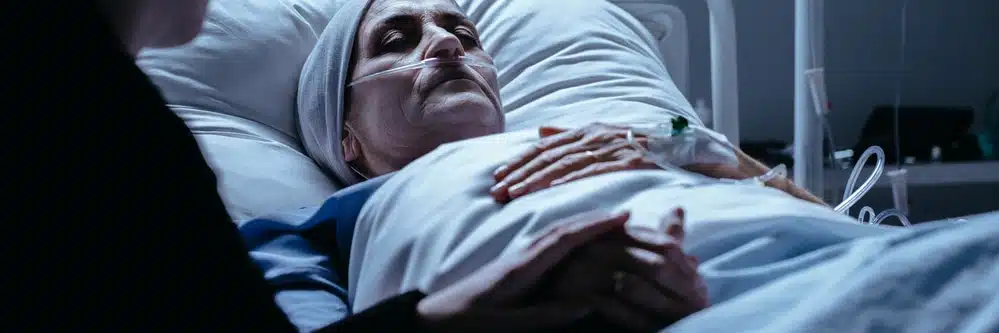
Content Reviewed by:
Michael F. Bonamarte, IV
Content Reviewed by: Michael F. Bonamarte, IV
Since 2005, Michael Bonamarte IV has been a passionate advocate for victims of negligent conduct, corporate malfeasance, and medical malpractice. He has won numerous awards and recognitions, including Best Lawyers in America and Super Lawyers’ Rising Star. He has presented for the American Association for Justice, the AAJ Nursing Home Litigation Group, the John Marshall Law School, and numerous other legal associations. He regularly lectures at Chicago-area aging organizations about nursing home abuse. His writings have been published by the American Bar Association, the Chicago Daily Bulletin, and numerous other prestigious publications.
Breathing Tube Removal Mistakes Can Be Deadly for Hospital Patients
During sedation or illness, many hospital patients may require breathing assistance through intubation. The device used in this procedure is called an endotracheal tube (ET) which is placed through a patient’s mouth and then into the airway so that a breath can be delivered when used with a ventilator. The sensitive intervention can be especially necessary for patients with respiratory failure in both hospital intensive care units (ICU) and pediatric intensive care units (PICU).
Unplanned extubation (UE) is the uncontrolled and dangerous removal of this life-sustaining breathing tube. Sometimes the removal is self-induced by a patient, but healthcare providers also make deadly mistakes during the repair of a tube, suctioning, weighing, or replacing a ventilator circuit. Sadly, UE is a complication that occurs in more than 121,000 adult patients every year in the U.S. and kills 33,000 American adults, as noted in a recent article published in MedPage Today, authored by Art Kanowitz, MD, FACEP.
Hospitals Can Help Stop UE Complications and Related Deaths
Kanowitz, who is the former EMTS medical director for Colorado’s Department of Public Health and now the founder of the Airway Safety Movement, suggests hospitals and physicians may be responsible for these preventable and deadly medical mistakes and can use these key steps to lessen the increased incidence of UE-related death among their patients.
- “Take assessment of your UE rate. Conduct an assessment to determine the rate of unplanned extubation in your hospital. Compare your rate to the performance range to determine how much opportunity there is for improvement. Then set goals and create actionable steps to move towards improving that number.
- Get internal buy-in. Executive leaders must serve as internal cheerleaders and provide the resources necessary to allow quality improvement and safety officers to take aim at eliminating preventable UE-related deaths.
- Develop and implement a quality improvement initiative. Use the model for improvement (plan-do-study-act) to drive your quality improvement process. Begin documenting UE rates to track performance over time. Create standardized policies and procedures using known best practices such as the Patient Safety Movement Foundation’s procedures using known best practices such as the Patient Safety Movement Foundation’s
- Commit to taking aim at zero preventable harm and death from UE. Make a commitment to the Airway Safety Movement and Patient Safety Movement Foundation that your hospital will do its part in eliminating this preventable complication of airway management.”
UE incidents often result in a catastrophic decline of a patient’s health and wellbeing. The events also provide a base for many medical malpractice lawsuits to be filed on behalf of UE victims who were seriously injured or died because of a healthcare provider’s negligence.
Report Breathing Tube Removal Injuries and Request Legal Help Today
If you believe that you or a loved one has been the victim of healthcare provider error in Illinois, please contact us online or at 877-374-1417 or 312–332–2872 for a FREE consultation with an experienced Chicago medical malpractice lawyer.



